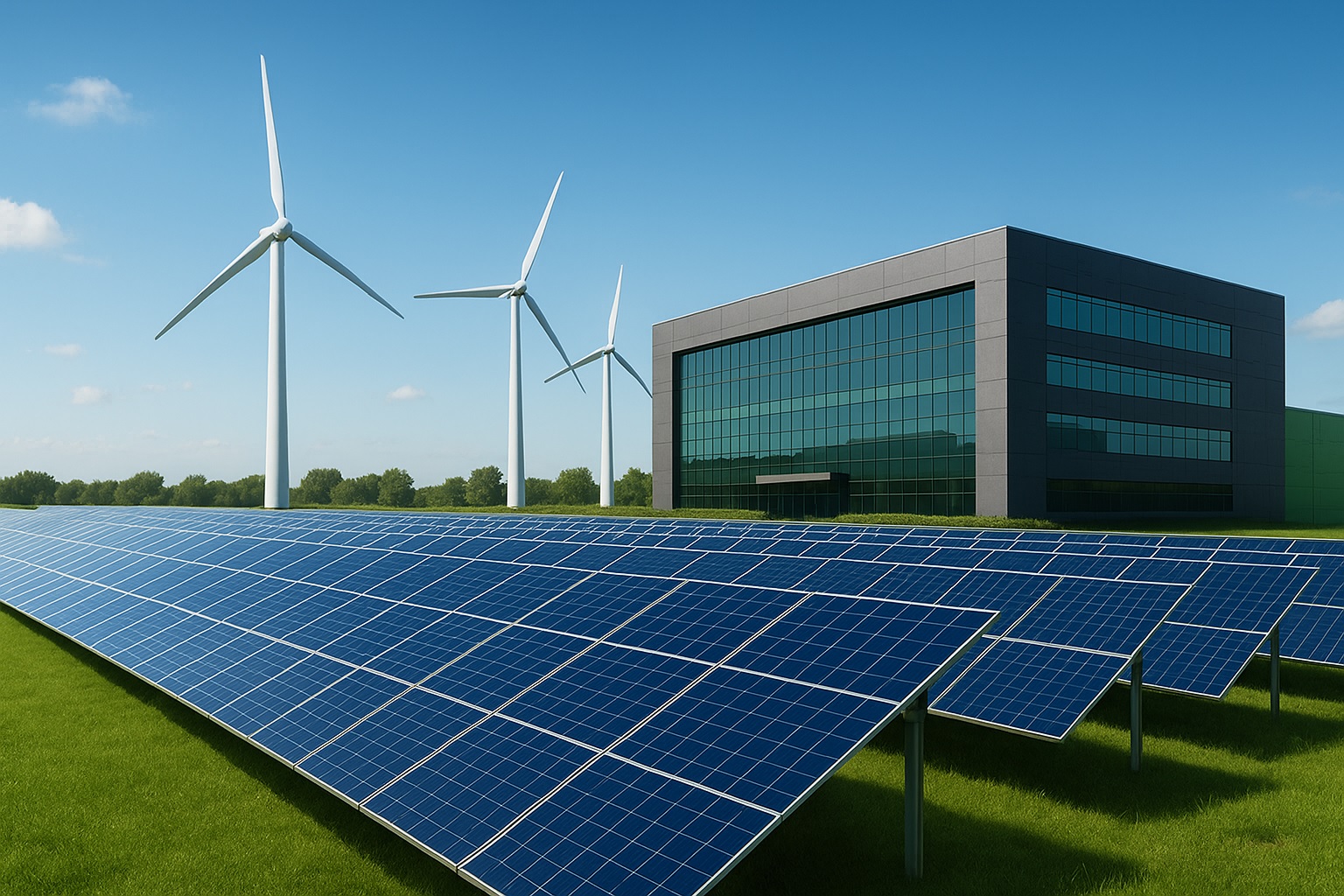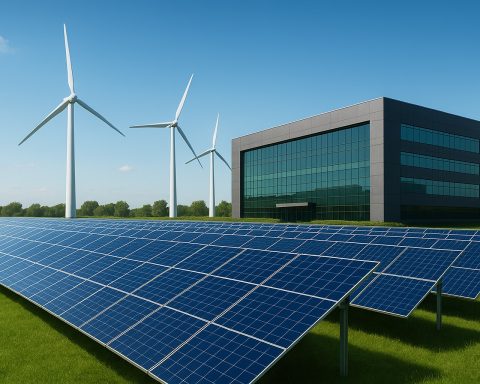Green AI refers to the development and use of artificial intelligence with a focus on minimizing environmental impact. Unlike “traditional” AI approaches that prize maximum performance at any cost, Green AI aims to lower the carbon footprint and energy consumption of AI models while still delivering useful results linkedin.com. In practice, this means designing, training, and deploying AI systems that are not only accurate but also energy-efficient and eco-friendly. This paradigm shift is significant because AI’s rapid growth comes with a growing environmental price tag. Training large neural networks can consume massive amounts of electricity – in one well-cited 2019 example, training a single deep learning model was estimated to emit as much carbon as five cars over their entire lifetimes infoq.com. Such findings underscore why Green AI is crucial: it aligns technological progress with our climate responsibilities, ensuring AI innovations do not undermine global sustainability goals linkedin.com.
Beyond mitigating harm, embracing Green AI can yield positive side benefits. Efficient AI models often run faster and cheaper, reducing operational costs alongside emissions linkedin.com. Prioritizing sustainability in AI also encourages broader responsible research practices and innovation in areas like efficient algorithms and renewable-powered infrastructure. In short, Green AI is about reconciling AI’s transformative potential with the urgent need to protect our planet. By making environmental impact a key consideration at every step – from model design to data center operation – we can drive AI advancements that benefit society without an outsized carbon cost linkedin.com. The following sections explore the environmental impact of current AI trends and how researchers, companies, and policymakers are working to “green” the AI pipeline.
The Environmental Impact of AI and High-Performance Computing
Modern AI, especially the high-performance computing (HPC) behind training large models, consumes enormous amounts of energy and resources. Data centers – the backbone of cloud and AI services – already account for an estimated 4.4% of U.S. electricity consumption as of 2023, a share that could triple by 2028 if current trends continue iee.psu.edu. Globally, data centers (excluding cryptocurrency) use around 1–1.5% of electricity, and the International Energy Agency projects their power demand could double between 2022 and 2026 institute.global. AI is a major driver of this growth. Analysts predict that the explosion of AI workloads could make data centers consume as much as 10% of all electricity in some countries by 2030, with AI-related computing responsible for up to 90% of the increase institute.global. In one forecast, by 2030 data centers worldwide might draw 3–4% of global electricity – a massive climate burden – and AI’s associated carbon emissions are on track to double between 2022 and 2030 if no changes are made greenly.earth.
The power-hungry nature of AI is evident when looking at individual models. Training state-of-the-art neural networks involves thousands of specialized processors (GPUs or TPUs) running for weeks or months, consuming huge amounts of electricity iee.psu.edu iee.psu.edu. A single large language model (LLM) with hundreds of billions of parameters can require thousands of kilowatt-hours of energy for one training run. For example, the GPT-3 model (175 billion parameters) is estimated to have used 1,287 MWh of electricity, roughly equivalent to the annual power usage of 120+ U.S. homes, and emitted about 552 metric tons of CO₂ during training infoq.com. Even after deployment, running AI models (inference) continually for millions of users adds to the footprint. In fact, 60–70% of AI’s total energy usage comes from inference (the day-to-day running of models to make predictions) rather than initial training greenly.earth. Popular services like chatbots and recommendation algorithms operate 24/7, meaning power draw is continuous. By late 2024, ChatGPT had ~300 million users, and the energy required to serve countless prompts gives it an enormous, albeit largely unmeasured, carbon footprint greenly.earth greenly.earth. One analysis found that ChatGPT’s predecessor consumed about 502 tons of CO₂ per year in electricity – the same annual emissions as 112 gasoline cars – just to serve responses to users greenly.earth.
It’s not only electricity and carbon emissions that matter. Water consumption is another hidden cost: AI data centers need intensive cooling, often using water. A study by University of California researchers found that composing a short email with an AI model (ChatGPT-4) can consume 500 mL of water when you factor in the cooling needs of the data center – multiply that by billions of queries and the water usage scales dramatically greenly.earth. Additionally, the short hardware lifecycles in AI contribute to electronic waste. Cutting-edge AI accelerators (GPUs, TPUs) may become obsoleted or wear out in just a few years, leading to tons of e-waste from discarded chips and servers iee.psu.edu. Manufacturing new hardware at scale has its own carbon footprint and requires mining of rare minerals, further straining natural resources iee.psu.edu. In summary, the environmental impact of AI spans electricity, emissions, water, and materials: from the coal or gas burned to power server farms, to the gallons of water evaporated for cooling, to the piles of electronics replaced and discarded. This impact is already significant and growing quickly, which is why “greening” AI has become an urgent priority for researchers and industry alike iee.psu.edu institute.global.
Key Strategies for Reducing AI’s Carbon Footprint
To address these concerns, scientists and engineers are pursuing many strategies to cut carbon emissions in AI. Key approaches include improving the efficiency of algorithms, optimizing models, greening data center operations, and rethinking hardware design. Below are some of the major techniques:
- Energy-Efficient Algorithms & Model Optimization: One of the most direct ways to reduce AI’s footprint is to make the AI itself require less computation. Researchers are developing algorithms that achieve the same results with fewer calculations, and hence less energy. For example, techniques like model pruning (removing unnecessary connections), quantization (using lower-precision math), and knowledge distillation (training smaller models to mimic large ones) can shrink model size and power use with minimal loss in accuracy infoq.com. Reusing and fine-tuning pre-trained models is another big saver – rather than training a giant model from scratch for every task, transfer learning allows AI developers to start from an existing model and thus use far less compute and energy infoq.com. A recent industry Q&A stressed that domain-specific models tuned for a particular job can be more efficient than enormous general-purpose models; by focusing on exactly what’s needed, they avoid the excess overhead of mega-models iee.psu.edu. In essence, “smarter” training approaches and model designs aim to do more with less – maintaining AI performance while cutting down the number of operations and hence electricity required.
- Low-Carbon Data Centers & Workload Scheduling: Reducing the carbon footprint of AI also means changing where and how models are run. Data center optimizations can dramatically lower emissions. Leading tech companies are siting data centers in regions with abundant renewable energy (like wind, solar, hydro) and improving their energy efficiency and cooling methods. Many data centers now strive for ultra-low Power Usage Effectiveness (PUE) – meaning minimal overhead energy beyond what the servers themselves need. Some facilities use advanced cooling techniques (like outside air cooling or liquid immersion cooling) to cut down power for chillers. Crucially, companies such as Google and Microsoft are committing to power their data centers with 100% carbon-free energy around the clock within the next decade cloud.google.com datacenters.google. This 24/7 carbon-free approach ensures AI workloads are truly running on clean power, not just offset by renewable credits annually. Another innovative strategy is carbon-aware computing: scheduling non-urgent AI jobs at times when green energy is plentiful. Research suggests shifting flexible computations across time zones or to different cloud regions so that more work is done when solar or wind power is available can significantly cut emissions iee.psu.edu. For example, an AI training job could pause during a coal-heavy peak and resume when a region’s grid is mostly renewable. By aligning computing with clean energy supply, AI can draw mostly green electricity, reducing reliance on fossil-fueled power iee.psu.edu.
- Sustainable Hardware Design & Efficient AI Chips: A major piece of the Green AI puzzle is building hardware that delivers more performance per watt. Specialized AI accelerators are already far more efficient than general-purpose chips for machine learning tasks. For instance, Google’s Tensor Processing Units (TPUs) and Amazon’s Trainium chips are custom-built for AI; successive generations of TPU have achieved a 3× improvement in carbon efficiency for AI workloads cloud.google.com cloud.google.com. This means newer chips can perform the same computations with only one-third the emissions. Tech companies are also conducting life-cycle assessments of their hardware – examining not just energy use during operation, but also manufacturing and end-of-life – to guide greener design choices cloud.google.com cloud.google.com. Longer-lasting, upgradeable hardware helps as well: designing modular components that can be replaced or added to extends server life and reduces e-waste infoq.com. Looking ahead, entirely new computing paradigms are being explored for efficiency gains. Neuromorphic chips (inspired by brain neurons) and optical/photonic processors (using light for computation) are two promising avenues that could potentially perform AI calculations with a fraction of the energy of today’s silicon chips iee.psu.edu. While largely experimental now, these technologies offer hope for orders of magnitude improvements in efficiency. Even quantum computing is being researched for certain AI problems, since it operates differently and might solve some tasks with exponentially fewer operations (though practical, energy-efficient quantum AI is still on the horizon) infoq.com. In the nearer term, simply using existing efficient hardware more effectively is key. Techniques like dynamic voltage/frequency scaling (DVFS) and better utilization (keeping processors busy doing useful work rather than idle) can cut waste. In summary, better chips and better use of chips mean more AI work per kilowatt-hour – directly shrinking the carbon per computation.
- Carbon-Neutral AI Lifecycle & Circular Practices: A truly sustainable approach considers the entire lifecycle of AI systems. This includes sourcing materials responsibly, reducing waste, and innovating in areas beyond just electricity use. For instance, researchers have floated ideas like biodegradable electronics for AI – using organic materials in some components so that hardware doesn’t linger as toxic waste infoq.com. While such ideas are nascent, they illustrate a broader push for circularity: recycling and reusing AI hardware wherever possible. Companies are beginning to refurbish used servers or redirect them to less intensive tasks to extend their useful life. Another aspect is offsetting and accountability: using carbon offsets or clean energy investments to counteract emissions that can’t yet be eliminated. Even software improvements play a role – cleaner code can reduce the computational overhead. For example, optimizing the software frameworks that run AI (like more efficient libraries and compilers) can yield energy savings without changing the hardware at all. Ultimately, no single strategy is sufficient; achieving Green AI requires combining many techniques. Optimized algorithms reduce the work needed, efficient hardware performs the work with less energy, and green infrastructure ensures that the energy comes from clean sources iee.psu.edu cloud.google.com. By attacking the problem from all sides, the AI industry is striving to bend the curve of emissions even as models grow more capable.
Recent Trends and Innovations in Sustainable AI
In the past couple of years, sustainable AI practices have gained tremendous momentum. What was once a niche concern is now a mainstream consideration in both AI research and deployment. Here are some of the notable trends and innovations pushing AI toward a greener future:
- Transparency and Measurement Initiatives: A foundational trend is the effort to measure AI’s environmental impact accurately and make it transparent. In early 2025, a group of AI researchers launched the “AI Energy Score” project, which provides a standardized energy-efficiency rating for AI models (much like EnergyStar ratings for appliances) huggingface.co. The project created a public leaderboard comparing the energy use of over 160 models across tasks (text generation, image analysis, etc.) and introduced an easy-to-read 5-star efficiency label for AI models huggingface.co huggingface.co. This push for transparency has been widely covered in the media and is pressuring major AI providers to disclose their models’ energy and carbon metrics. Similarly, open-source efforts like those by Hugging Face have encouraged model developers to report training emissions and even integrate tools (e.g. CodeCarbon) into AI libraries to automatically log energy usage huggingface.co. The result is a growing culture of accountability – what some call the “green report card” for AI – where efficiency is tracked alongside accuracy. This data-driven approach enables researchers and companies to set benchmarks and track improvements over time, ensuring that claims of “Green AI” are backed by numbers.
- Efficiency as a Competitive Metric: In AI research, there’s a clear shift toward valuing efficiency improvements. Conferences and journals are increasingly interested in papers that don’t just present more accurate models, but also document computational cost reductions. In fact, the very term “Green AI” was popularized by a 2020 paper that argued for treating efficiency as a primary evaluation criterion for new AI systems cacm.acm.org. Today, we see that philosophy in action: for many AI challenges, the goal is not only to beat the state-of-the-art in accuracy, but to do so with fewer FLOPs (floating-point operations), less memory, or lower power. Competitions are emerging for “most efficient model” in a category, and organizations like the Green Software Foundation’s AI Committee are working to standardize metrics (such as “Software Carbon Intensity”) for AI workloads greensoftware.foundation. This trend is fostering innovations like algorithmic efficiency challenges (where teams try to achieve a certain score using minimal compute) and the inclusion of energy metrics in academic leaderboards. All of this signals that efficiency is becoming a point of pride and a competitive differentiator in AI development, which bodes well for sustainability in the long run.
- Advances in Hardware and Chip Efficiency: Rapid innovation in hardware is another trend enabling Green AI. Each new generation of AI chips is leapfrogging the previous in performance-per-watt. For example, Google’s recent TPU v4 and v5 accelerators and Nvidia’s latest GPUs (like the Hopper H100) are significantly more energy-efficient for AI workloads than their predecessors. Google reports a 3× improvement in the carbon efficiency of AI computing from TPU v4 to their newest TPU (code-named “Trillium”), thanks to better chip design and process improvements cloud.google.com. Similarly, startups are producing AI accelerator chips optimized for low-power edge devices, bringing down the energy needed for tasks like keyword spotting or image recognition on smartphones (part of the TinyML movement). Another exciting development is in chip specialization: companies now offer different hardware for training and inference, or even for specific model types (vision vs. language), each tuned for maximum efficiency. We are also seeing more widespread use of AI at the edge – running AI on-device (from phones to IoT sensors) – which avoids the energy costs of constant data center communication and can use efficient local chips. While big server-side models still hog the most power, these hardware advances ensure that each compute cycle is delivering more AI than ever before, which mitigates the growth of energy demand.
- Innovative Cooling and Energy Management: Data center operators are innovating not just in chips, but in how those chips are cooled and powered. One trend is the adoption of advanced cooling techniques like liquid cooling (circulating fluid directly over hot components) and even immersive cooling (submerging servers in special coolant liquids). These methods can dramatically cut the energy needed for cooling compared to traditional air conditioning. Another trend is using AI itself to optimize data center operations: Google famously applied a DeepMind AI system to manage its cooling equipment and achieved around 30% reduction in cooling energy by dynamically adjusting fans and chillers more efficiently than human operators trellis.net. Now, other companies are following suit, using AI-driven control systems for everything from cooling to power distribution in their server farms. On the energy supply side, renewable energy integration is a key innovation. Cloud providers are entering into huge power purchase agreements for wind and solar farms, effectively funding new clean energy capacity to supply their data centers. They’re also experimenting with energy storage, onsite batteries, and even small-scale generation (like rooftop solar on data centers) to ensure reliability as they shift to renewables. The net effect of these efforts is that modern data centers are far greener per computation than those of a decade ago. Google, for instance, achieved four times more computing power in 2022 than in 2017 using the same amount of electricity, through efficiency gains and infrastructure improvements datacenters.google datacenters.google. This trend of squeezing more work out of each watt is essential to keep AI sustainable even as demand increases.
- Collaboration and Knowledge Sharing: Lastly, an important recent trend is the growth of cross-sector collaborations focused on sustainable AI. Initiatives like the Green AI Institute and the Climate Change AI community are bringing together experts in machine learning, climate science, and policy to share best practices and drive research at the intersection of AI and sustainability. Industry consortia – for example, the Green Software Foundation’s Green AI Committee – are defining standards and guidelines for measuring and reducing AI’s footprint greensoftware.foundation greensoftware.foundation. Even governments and international bodies are now explicitly examining AI’s energy impact and funding R&D for mitigation. This collaborative spirit is yielding open datasets (for carbon intensity of various compute regions), tools (like open-source carbon trackers for ML), and forums (workshops, summits) dedicated to Green AI. One could say that sustainable AI has moved from a fringe idea to a mainstream movement, uniting stakeholders from big tech, startups, academia, and government. The result is faster dissemination of ideas and tactics – what one company learns about, say, optimizing GPU utilization, quickly finds its way into cloud platforms and ML frameworks that everyone uses. This accelerating exchange of knowledge is an innovation in itself, amplifying the impact of individual green breakthroughs across the whole AI ecosystem.
Policies and Initiatives Promoting Green AI
Recognizing the importance of curbing AI’s carbon footprint, policymakers and organizations worldwide are taking action. A mix of government policies, industry initiatives, and corporate commitments are converging to promote Green AI on multiple fronts. Below are some of the key efforts and proposals driving the change:
- Government Policy Agendas: Governments are beginning to incorporate AI’s energy impact into their climate and tech policies. For example, a 2024 policy agenda from the Tony Blair Institute outlined a five-point plan for “Greening AI,” urging governments to (1) build capacity for AI-energy planning in agencies, (2) establish standardized metrics for reporting AI energy use and carbon emissions, (3) set flexible targets and a green AI certification to incentivize efficient practices, (4) invest in clean energy and green AI R&D (like advanced low-power chips, and open-source models to avoid redundant mega-trainings), and (5) coordinate internationally through forums like the annual COP climate talks institute.global institute.global. This reflects a growing understanding that AI and energy policies must be linked. Some countries have even taken short-term measures, such as moratoria on new data centers in regions where the electrical grid is under strain institute.global. For instance, Ireland and Singapore temporarily paused data center construction to re-evaluate their sustainability and grid impact. Overall, the policy trend is toward encouraging innovation in Green AI while managing the “demand shock” of AI on power infrastructure. Notably, major science funders are also stepping in: the U.S. National Science Foundation and Department of Energy have begun grant programs for energy-efficient AI research, and the European Union has included sustainable computing goals in its digital and climate strategy iee.psu.edu.
- Industry Coalitions and Standards: The tech industry isn’t waiting for mandates – it has formed coalitions to self-regulate and share best practices. The Green Software Foundation (GSF), for instance, convened a Green AI Committee in 2024, bringing together members from companies like Microsoft, Google, IBM, Accenture and more greensoftware.foundation. In 2025 they released a Green AI Position Paper defining Green AI as reducing the environmental impact of AI across its entire lifecycle and emphasizing the need for standard metrics and lifecycle assessment greensoftware.foundation greensoftware.foundation. The committee is working on guidelines similar to software efficiency standards but tailored to AI systems – for example, protocols for consistently measuring carbon emissions of training runs, or standards for reporting energy use in AI model documentation. Another industry effort is the Climate Neutral Data Centre Pact in Europe, where data center operators (including big cloud and colocation providers) voluntarily committed to targets like improving efficiency (PUE), using 100% carbon-free power by 2030, and recycling heat and hardware when possible. As of 2023, this pact had over 100 signatories and is being closely watched by EU regulators datacentremagazine.com europarl.europa.eu. Such self-regulatory initiatives aim to pre-empt stricter regulations by showing the industry’s commitment to act. In a similar vein, companies are collaborating on open tools like the ML Carbon Dashboard (which helps choose cloud regions with lower carbon electricity) and contributing to organizations like Climate Change AI, which provides policy advice on AI’s role in climate action (including reducing its own footprint).
- Corporate Sustainability Commitments: Many tech companies have made bold sustainability pledges that encompass their AI operations. For example, Google has been carbon-neutral (via offsets) since 2007 and matched 100% of its electricity use with renewables since 2017 blog.google blog.google. Now Google is aiming for a more ambitious goal: powering all its data centers and campuses on 24/7 carbon-free energy by 2030, meaning every hour of operation is backed by local clean power (no fossil fuels) blog.google blog.google. This is directly motivated by the rising energy needs of AI – Google acknowledges it as their “biggest sustainability moonshot” due to the complexity of ensuring round-the-clock clean power blog.google. Microsoft likewise has committed to be carbon negative by 2030 (removing more CO₂ than it emits), and to run on 100% carbon-free energy by 2030, even as its AI services like Azure cloud and OpenAI partnership expand. Microsoft is investing heavily in renewable energy projects and energy storage to meet these goals. Meta (Facebook) declared it achieved net-zero emissions for its operations in 2020 by switching to 100% renewable energy, cutting operational emissions by 94% from 2017 levels sustainability.fb.com. Meta’s new data centers are all designed for efficiency (their 2023 fleet-wide PUE was about 1.10, very low). However, Meta and others have also been candid that the AI boom is making scope 3 (supply chain and hardware manufacturing) emissions a challenge, as their overall footprint has ticked up with massive AI infrastructure investments trellis.net. This has led them to double down on innovations to offset that growth (e.g., Meta’s sustainability team uses AI to identify carbon reduction opportunities in construction and operations trellis.net). Amazon (AWS) too has a Climate Pledge to reach net-zero by 2040, and AWS is on track to use 100% renewable energy for its global cloud by 2025. In practice, this means that the majority of AI workloads running on AWS will be renewably powered in a few years. Beyond energy, companies are integrating sustainability into procurement and processes – for instance, some cloud providers now offer dashboards to customers showing the carbon footprint of their cloud usage and even recommendations for lower-carbon alternatives infoq.com. All these corporate actions not only reduce direct emissions but also set industry benchmarks and competitive pressure: if one cloud advertises significantly lower CO₂ per AI inference, others are incentivized to improve or at least be transparent.
- International Cooperation and Agreements: At the international level, awareness is growing that AI’s climate impact is a global issue requiring cooperation. In late 2023 and 2024, dialogues on “Green AI” made their way into UN Climate Change conferences. There have been proposals under the COP framework to add an agenda on digital technology emissions, which would include AI. The idea is to get countries to agree on norms for sustainable computing – analogous to agreements on reducing industrial emissions. For instance, countries might pledge to promote energy-efficient AI R&D or to share data on AI energy use. While no binding international treaty exists yet specifically on AI emissions, bodies like the International Telecommunication Union (ITU) and the OECD have started initiatives to study ICT (information & communication tech) energy use and develop policy recommendations. One concrete suggestion from policy experts is a “Green AI Breakthrough” as part of the COP Breakthrough Agenda – essentially a global goal to ensure AI’s energy requirements are met with clean energy and that AI is used to accelerate (not hinder) climate solutions institute.global. In the meantime, regional efforts like the EU’s proposed Energy Efficiency Directive updates are including data centers in their scope, requiring large data centers to report energy and water use and waste heat recycling, which indirectly forces AI-heavy operations to optimize. We are also seeing cross-border research collaborations, like the EU-Japan Green ICT cooperation, which often cover efficient AI as a topic. In summary, on the policy front, the pieces are beginning to align: metrics and standards to illuminate the problem, incentives and regulations to improve practices, and high-level commitments to guide the industry toward sustainability. While much work remains, these initiatives provide a framework within which Green AI can flourish.
Case Studies: Organizations Leading in Green AI
Many organizations have emerged as leaders in implementing Green AI practices, showcasing what is possible through commitment and innovation. Below, we highlight a few notable case studies:
- Google: As one of the world’s largest AI and cloud providers, Google has put sustainability at the center of its strategy. Google’s data centers are renowned for their efficiency – in 2023 their average PUE was about 1.10, nearly 1.8× more efficient than a typical enterprise data center datacenters.google datacenters.google. The company has been matching 100% of its electricity use with renewable energy since 2017, and is now pushing to run on carbon-free energy 24/7 by 2030 in all locations blog.google blog.google. This means Google’s AI workloads will increasingly be directly powered by wind, solar, hydropower, and other non-fossil sources at every hour of the day. Google also pioneered the use of AI for its own operations – notably, using DeepMind’s machine learning to control cooling systems, which yielded about 30% reduction in cooling energy in early trials trellis.net. On the hardware front, Google develops its own TPU (Tensor Processing Unit) chips that are highly optimized for AI efficiency. A 2025 study showed that Google’s 6th-gen TPU (code-named “Trillium”) can perform the same AI task with one-third of the emissions compared to its 4th-gen predecessor cloud.google.com. Moreover, Google is sharing methodologies like the Compute Carbon Intensity (CCI) metric – a measure of grams of CO₂ per unit of computation – to help the industry benchmark hardware efficiency cloud.google.com. In practice, Google’s multi-pronged efforts (efficient hardware + green power + clever cooling) have allowed it to quadruple its computing output in recent years with no increase in power usage datacenters.google. This leadership has a ripple effect: Google often open-sources its efficiency tools and publishes its findings, helping set greener standards across the AI field.
- Meta (Facebook): Meta has made sustainability strides, particularly in sourcing renewable energy. By 2020, Meta achieved net-zero operations and has since supported its data centers with 100% renewable energy, slashing operational emissions by 94% (against a 2017 baseline) sustainability.fb.com. All of Meta’s data centers are built to high efficiency specs (LEED Gold or better), and the company boasts an average PUE around 1.1 as well. However, Meta’s case is instructive about the challenges of scaling AI sustainably. The company’s AI expansion – including building massive new AI supercomputing data centers – caused its total carbon footprint to increase by ~38% from 2021 to 2023, even as operations remained green trellis.net. In 2023, Meta’s emissions (including supply chain) were about 14 million tCO₂, double what they were in 2019 trellis.net. This has put pressure on Meta to find creative solutions to reconcile AI growth with climate goals. One solution is using AI to solve its own sustainability problems. Meta’s sustainability team has deployed AI models to analyze and improve energy efficiency. For example, Meta developed an AI system to optimize cooling fan speeds in its data centers, which cut fan energy use by 20% without affecting temperatures trellis.net. In another project, Meta used AI to discover lower-carbon concrete formulas for building data center walls – by substituting materials like fly ash and ground glass, they reduced the concrete’s embodied carbon by about 40% while maintaining strength trellis.net. These are significant savings given the size of their facilities. Meta is also investing in long-term carbon removal (e.g., reforestation and direct air capture) to offset the hard-to-eliminate emissions from its supply chain, and it continues to push for new clean energy in regions where it operates. The Meta case study shows both the commitment – they remain “100% committed” to their climate pledges despite AI’s demands trellis.net – and the difficulty, requiring constant innovation to keep emissions in check as AI workloads explode. It exemplifies why Green AI is as much about operational smarts and R&D as it is about procurement of green power.
- Hugging Face & BigScience: Hugging Face, a small AI startup known for its popular machine learning platform, has punched above its weight in championing Green AI. Hugging Face was a core organizer of the BigScience project, a year-long research collaboration that in 2022 trained a 176-billion-parameter open language model (BLOOM) with an unprecedented focus on transparency and efficiency. They decided to train BLOOM on France’s national supercomputer (Jean Zay), which is largely powered by low-carbon electricity (France’s grid is mostly nuclear and renewables). As a result, BLOOM’s training emitted only about 25 tons of CO₂ (considering operational energy) – roughly 20 times less than a comparable model like GPT-3 trained in 2019 researchgate.net. Even accounting for manufacturing and full lifecycle, BLOOM’s total footprint (50 t CO₂) was an order of magnitude smaller than GPT-3’s ~500 t. Hugging Face researchers meticulously measured these emissions and published a detailed paper so that the community could learn from it researchgate.net. This level of openness was new – they even released the logs of energy consumption during training, something big corporate AI efforts rarely do. Building on this ethos, in 2025 Hugging Face launched the AI Energy Score initiative (mentioned earlier) to benchmark model efficiency and encourage AI providers to disclose their energy use huggingface.co. Hugging Face integrated tools into their libraries that allow anyone training a model to estimate carbon emissions based on the power draw and location. They also collaborate with universities on research to estimate the carbon footprint of various models hosted on their platform arxiv.org huggingface.co. As a result, Hugging Face has become an advocate for energy transparency in AI – essentially pushing the industry to “name and shame” energy hogs and celebrate efficient approaches. While Hugging Face’s own operations are modest (they mostly provide an online model hub), their influence through community and policy outreach is significant. They demonstrate that even smaller players can lead by example: showing that it’s possible to train large models responsibly, and pushing for industry-wide change so that efficiency and carbon impact become part of the conversation for every AI project.
- Others: Several other organizations deserve mention. Microsoft has been investing in both green energy and AI efficiency research; it co-founded the GSF’s Green AI initiatives and has a plan to be carbon negative by 2030, meaning it will remove more carbon than it emits (partly to counteract the surge in its AI cloud services) microsoft.com interface.media. Microsoft researchers have worked on techniques like sparse models (which activate only portions of the network as needed, saving compute) and are exploring liquid cooling for their AI data centers. OpenAI, while not very transparent about its operations, has reportedly partnered with cloud providers to ensure a portion of the power for training models like GPT-4 comes from renewable sources, and they have invested in efficiency improvements (for instance, GPT-4 is said to be more efficient in training than GPT-3 was, achieving higher performance per unit of compute – though exact figures aren’t public). IBM has a long history of energy-efficient computing (from mainframes to neuromorphic chips like TrueNorth) and continues to research hardware-friendly AI algorithms that can run on minimal power, aligning with their enterprise clients’ sustainability goals. On the academic side, initiatives like Climate Change AI bring researchers together to both use AI for climate solutions and reduce AI’s own footprint through workshops and publications. Even national labs and supercomputing centers (such as the Swiss National Supercomputing Centre and NERSC in the US) have begun tracking the energy usage of AI jobs and offering priority or discounts for jobs that can run during renewable energy surges. Each of these efforts, big or small, contributes to a growing ecosystem of Green AI practices.
Challenges and Trade-offs in Implementing Green AI
While progress is being made, implementing Green AI at scale faces several challenges and trade-offs that must be navigated:
- Performance vs. Efficiency Trade-off: Historically, the AI community has been laser-focused on improving performance – accuracy, capability, and training speed – often at the expense of efficiency. Larger models and more computations have generally meant better results, creating a “bigger is better” mindset. Shifting to Green AI means sometimes accepting that small is beautiful, or at least that efficiency must count alongside accuracy cacm.acm.org. This can create a tension: researchers might need to spend extra time optimizing models or may forgo a few percentage points of accuracy to use a model that’s 10× more efficient. Likewise, businesses have to balance the benefit of an AI system’s output with the energy cost to get that output. In some cases, improving efficiency can even improve performance (e.g. a smaller model might generalize better and be faster), but in other cases there’s a genuine trade-off. The challenge is to cultivate a culture where efficient solutions are rewarded, and not seen as merely secondary to raw performance. This is gradually happening with the introduction of efficiency metrics in research, but it requires a mindset shift: AI progress should be measured in “quality per compute” not just quality alone.
- The Scale/Rebound Effect: There’s a phenomenon in sustainability where efficiency improvements can lead to more use – known as the rebound effect or Jevons’ Paradox. AI may be experiencing this. As models and hardware get more efficient, it also becomes cheaper and easier to deploy AI everywhere, which in turn increases overall demand for compute. For example, if a company makes their AI inference 2× more efficient, they might simply double the number of AI-driven features in their product (since each now costs half as much to run), nullifying the energy savings. We see a macro-scale version of this in data centers: despite efficiency gains, total data center energy use keeps rising because our appetite for digital services (many AI-powered) grows even faster trellis.net datacenters.google. This means Green AI efforts must be coupled with responsible scaling. It raises hard questions like: Should we deploy an AI system at all if its net societal benefit doesn’t justify its carbon cost? The Green AI movement encourages asking “Do we need a giant deep model for this problem, or is there a simpler alternative?” greensoftware.foundation during the design phase. It also means that efficiency gains must continually outpace growth in usage to actually reduce emissions. The trade-off here is essentially between AI’s benefits and its environmental costs at the societal level – finding the sweet spot where we’re not sacrificing important innovation, but also not going overboard on gratuitous compute usage.
- Transparency and Data Gaps: Another challenge is simply knowing where we stand in terms of AI’s environmental impact. Many AI developers (especially in industry) have been reluctant to share data on energy use, either due to competitive secrecy or fear of criticism huggingface.co. Until recently, few AI papers or product announcements mentioned carbon footprint at all. This lack of transparency makes it difficult to identify the biggest inefficiencies or to hold organizations accountable. It also means researchers can’t easily learn from each other’s mistakes or successes in reducing energy. While initiatives like the AI Energy Score and better reporting are trying to close this gap, participation from all major players is not yet universal – for example, as of 2025 many top AI labs had not publicly released energy metrics for their latest models huggingface.co. This is slowly changing under pressure from stakeholders (customers, employees, even investors who ask about ESG performance). The trade-off here is between proprietary advantage vs. collective good: companies worry that revealing efficiency data might hint at their model architectures or costs, but doing so is crucial for global improvement. Overcoming this requires building trust and perhaps neutral third-party audits so companies can confidentially share data that contributes to industry benchmarks.
- Economic and Technical Hurdles: Implementing Green AI measures often comes with up-front costs or technical complexity. For example, designing a custom low-power AI chip or retrofitting a data center for liquid cooling is expensive. Training a model with a new efficient algorithm might require more research and experimentation (time = money) compared to using a well-known but brute-force technique. Small firms and researchers with limited resources might find it hard to invest in efficiency if it’s not immediately cost-saving. There’s also a knowledge barrier – expertise in both AI and energy optimization is relatively rare, so organizations need to hire or train people with this interdisciplinary skill set. On the infrastructure side, accessing truly green electricity 24/7 can be challenging in certain regions; companies may have to pay a premium for renewable energy or invest in energy storage to cover gaps. These hurdles can make sustainability feel like a “luxury” that only wealthy tech giants can afford, which is a perception we must change. Encouragingly, there are signs that many green investments pay off in the long term – energy-efficient designs often save money over time in electricity bills, and renewable energy prices are falling. Still, organizations face a classic short-term vs. long-term trade-off: they must be willing to incur some immediate cost (or accept slightly lower baseline performance) for the sake of sustainability and future efficiency gains. Policies like carbon pricing or efficiency standards could help tilt this calculus by making the sustainable choice more economically rewarding.
- Scope of Impact and Responsibility: AI’s environmental footprint spans a broad scope – from the mining of minerals for chips, to the electricity generation, to the disposal of hardware. Addressing all of this is complex. A challenge for Green AI proponents is to avoid just shifting the impact around. For example, if we make data centers carbon-free but greatly increase hardware production, we might just be outsourcing the emissions to manufacturing plants and mining sites. A holistic approach is needed, but that requires coordination across industries (electronics, power, computing) and even countries. No single AI lab or company can control the carbon intensity of the entire supply chain. This raises questions of responsibility: Should AI companies be responsible for the emissions of chip factories in their supply chain? Many companies are now considering Scope 3 emissions (indirect emissions from supply chain and product use) and setting targets to reduce those, which is a positive development trellis.net. However, reliably calculating and reducing those requires cross-industry data sharing and collective action (for instance, chipmakers switching to renewable energy or recycling programs for electronics). Achieving that kind of broad coordination is challenging. There’s a trade-off in focus – tackle the “low-hanging fruit” (like operational efficiency) first, or devote effort to harder, system-wide issues like supply chain decarbonization? The answer is we need to do both eventually, but prioritizing and sequencing actions is an ongoing challenge.
In summary, implementing Green AI is not without its difficulties. There are technical trade-offs, cultural shifts, and systemic challenges to overcome. The encouraging news is that none of these challenges are insurmountable: the AI community is creative and collaborative, and these same qualities can solve the efficiency puzzle as they did with past performance puzzles. A key part of navigating the trade-offs is broadening the conversation: involving not just engineers, but also product managers (to reconsider feature bloat), policymakers (to adjust incentives), and the public (to build support for sustainable tech). By anticipating and addressing these challenges head-on – transparently acknowledging where we fall short – the movement for Green AI can continue to gain momentum without being derailed by unexpected pitfalls.
Future Outlook for Sustainable AI Development
Looking ahead, the drive toward Green AI is poised to accelerate and become an integral part of AI development. There is growing consensus that sustainability will join accuracy, fairness, and security as a core criterion by which AI systems are judged. Several trends point to a future where AI innovation and environmental responsibility go hand in hand:
- Integration of Green AI Principles: We can expect that within a few years, it will be routine for AI research papers and product launches to include energy and carbon metrics. Just as “model size” or “latency” are commonly reported today, tomorrow’s standard practice may be to report “X model achieved Y accuracy with Z kWh of energy”. This transparency will be enabled by improved tooling – imagine development frameworks that automatically output the carbon footprint of training your model. As these metrics become commonplace, they will inform design decisions from the start. An AI engineer in 2030 might decide not to pursue a certain massive model architecture because a quick calculation shows it’d be too energy-intensive, opting instead for a clever efficient method that achieves similar results. In other words, energy awareness will be baked into the AI development lifecycle. The Green Software Foundation’s focus on lifecycle assessments and standardized metrics is paving the way for this greensoftware.foundation greensoftware.foundation. In education too, the next generation of AI practitioners will likely be trained to consider optimization and sustainability as fundamental skills, much as they learn about algorithmic complexity.
- Technological Breakthroughs: On the technology front, there is optimism for breakthroughs that could dramatically cut AI’s energy use. Neuromorphic computing and quantum computing are two areas to watch. Neuromorphic chips, which operate in a way analogous to the human brain’s neurons and synapses, have the potential to perform certain AI tasks with orders of magnitude less energy – they’re already showing promise in low-power pattern recognition and could see expanded use as the technology matures iee.psu.edu. Quantum computing, while not a panacea for all AI tasks, might solve specific optimization or machine learning problems exponentially faster than classical computers, which could reduce energy needs if those tasks are major bottlenecks (the caveat: quantum machines themselves have non-trivial cooling and energy overhead, so they must surpass a high bar of efficiency). In more conventional tech, we will likely see AI-specific silicon in everything from phones to appliances, ensuring that edge AI applications run with minuscule power draw. Analog AI chips that compute with analog signals rather than digital could also revolutionize efficiency for neural network inference. Additionally, software algorithms will continue to improve. There’s a trend toward “smaller but smarter” models – for example, techniques like mixture-of-experts or sparse activation that allow models to have massive capacity but only activate small parts as needed, effectively scaling compute with the complexity of input rather than the size of the model. Such innovations could allow us to have extremely capable AI systems that incur cost only proportional to the problem’s difficulty, not their entire size. If the current rate of algorithmic and hardware improvement continues, some experts envision that the energy needed for a given level of AI performance could drop by 100× or more in the next decade (combining hardware gains, algorithmic efficiency, and better utilization) cloud.google.com. This could largely offset the growth in demand, meaning we get more AI with less carbon.
- AI-Enabled Climate Solutions: A virtuous cycle is emerging where AI itself is a key tool in fighting climate change – optimizing electric grids, improving energy storage, modeling climate impacts, etc. As Green AI reduces the footprint of AI, it essentially “gives” more capacity for AI to be deployed in these beneficial ways without guilt. In the future, we might see large-scale AI deployments explicitly tied to climate action: for instance, an AI system that manages a country’s renewable energy grid in real-time, or AI coordinating thousands of electric vehicles to stabilize the grid. These AI applications can more than offset their own emissions by enabling higher renewable penetration and efficiency in other sectors. Already, DeepMind has used AI to boost wind farm output forecasting (making wind energy more viable), and many utilities use AI for demand response and energy savings institute.global. As AI becomes cleaner, its net effect on climate can become overwhelmingly positive. This synergy was described as a potential “positive loop” – AI helps drive the clean energy transition, which in turn provides the clean power needed for more AI, in a reinforcing cycle institute.global. Achieving this will require intentional design: prioritizing AI projects that have sustainability co-benefits and ensuring the infrastructure behind AI is green. But the outlook suggests that AI will be a major ally in climate mitigation when developed responsibly. In essence, the goal is that by 2030 or 2040 we look at AI not as a climate problem, but as a climate solution – or at worst, a neutral player.
- Policy and Market Forces: Looking forward, policies will likely become stricter regarding tech emissions, which will further push Green AI. We could see carbon taxes or caps that effectively penalize inefficient AI processes, or regulations requiring large AI training runs to use a certain percentage of renewable energy. Governments might mandate transparency in AI energy use (for example, an extension of data center reporting requirements to include AI-specific workloads). If the world gets serious about climate targets, every sector – including digital tech – will be expected to contribute emissions reductions. This external pressure will cement Green AI practices as not just optional but necessary. On the market side, consumer and client preferences are shifting too. Companies procuring AI services may favor those that demonstrate lower carbon footprints, similar to how some cloud customers today choose “green cloud” options. We might even see eco-labels on AI services (“This AI chatbot response was delivered carbon-neutrally”) as a marketing point. Such forces will make sustainability a competitive advantage. Corporations that have heavily invested in Green AI (like Google with its carbon-free data centers) will be positioned to offer services that meet the environmental criteria organizations may require from vendors. All told, economic incentives are gradually aligning with environmental ones, meaning the business case for Green AI will strengthen over time.
- Cultural Shift and Awareness: Lastly, the human element – the culture around AI – is likely to continue evolving. The AI sector has a lot of bright minds who increasingly care about global challenges. As awareness of the climate crisis grows, more AI researchers and engineers are motivated to work on solutions or at least ensure they “do no harm” through their work. This is evidenced by the surge of interest in organizations like Climate Change AI and the fact that many top labs now have some focus on sustainability. One can imagine that in the coming years, AI conferences might add Green AI tracks or awards (some already have “best paper for positive impact” etc.). It will become prestigious to design an AI model that is not only state-of-the-art but also extremely efficient. In education, courses on AI now include modules on ethical and sustainable AI, meaning new graduates will carry those values. This cultural shift is hard to quantify, but it’s crucial – ultimately, it’s people who decide whether to train a model with 100 GPUs for a slight accuracy gain or to find a cleverer way. The more the AI community internalizes the ideals of Green AI, the more those daily decisions will tilt toward sustainability without needing top-down enforcement.
In conclusion, the future of AI is poised to be greener by design. If current trends continue, we will see AI systems that are dramatically more efficient, powered by clean energy, and deployed in service of climate solutions. There is a realistic hope that we can decouple AI’s benefits from its carbon costs, allowing exponential improvements in AI capability while flattening (or even decreasing) the associated emissions curve. Achieving this will require continued dedication – technical innovation, supportive policies, industry collaboration, and public support all playing a part. But as we’ve outlined, many of those pieces are falling into place. Green AI is moving from a niche topic to the new normal for AI development. In the compute era, cutting carbon is no longer a constraint on innovation – it’s an opportunity to innovate smarter. By weaving sustainability into the fabric of AI’s future, we ensure that our pursuit of intelligence enhancement remains in harmony with the planet that sustains us. The coming years will be pivotal, and if we succeed, future generations might look back and see Green AI as one of the era’s great transformations, where technology and environmental stewardship advanced together to shape a better world.
Sources:
- Rapaka, R. (2024). Reducing the Carbon Footprint of AI: An Introduction to Green AI linkedin.com linkedin.com
- Kandemir, M. (2025). Why AI uses so much energy — and what we can do about it. Penn State IEE Blog iee.psu.edu iee.psu.edu
- Greenly Earth. The hidden cost of artificial intelligence. (2023) greenly.earth greenly.earth
- InfoQ (2025). The Rise of Energy and Water Consumption Using AI Models, and How It Can Be Reduced infoq.com infoq.com
- Green AI Institute – Policy White Paper (2024) greensoftware.foundation greensoftware.foundation
- Tony Blair Institute (2024). Greening AI: A Policy Agenda for the AI and Energy Revolutions institute.global institute.global
- Clancy, H. (2024). The Meta dilemma: Invest billions in AI but find ways to cut emissions too. GreenBiz/Trellis trellis.net trellis.net
- Patterson, D., et al. (2025). Designing sustainable AI: TPU efficiency and emissions. Google Cloud Blog cloud.google.com cloud.google.com
- Sasha Luccioni et al. (2022). Estimating the Carbon Footprint of BLOOM (176B model). JMLR researchgate.net
- Sasha Luccioni & Boris Gamazaychikov (2025). AI Models Hiding Their Energy Footprint? Here’s What You Can Do. (Hugging Face blog) huggingface.co huggingface.co
- Schwartz et al. (2020). Green AI. Communications of the ACM cacm.acm.org
- Google Data Centers – Sustainability site (2023) datacenters.google datacenters.google
- Sundar Pichai (2020). Our third decade of climate action: Realizing a carbon-free future. Google Blog blog.google blog.google
- Microsoft CSR – Sustainability Report (2023) microsoft.com
- (Additional references in text from IEA, ITU, etc., are cited via the above sources.)












